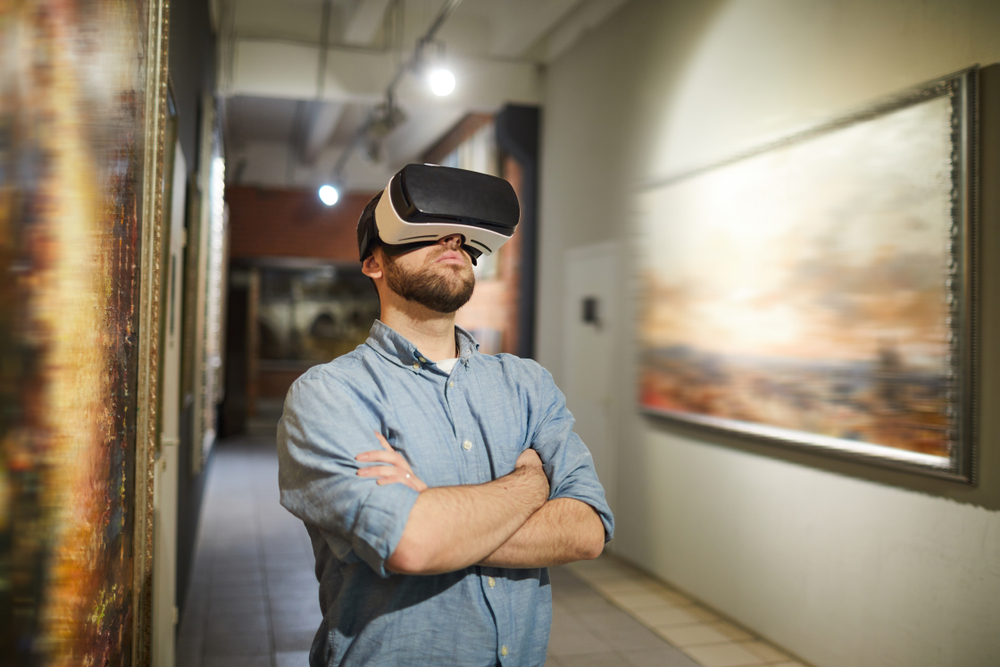The Immersive Advantage: Harnessing Virtual Tours in Content Marketing

In today’s digital age, content marketing is all about engaging your audience in meaningful and memorable ways. One method that’s been gaining significant traction is the use of virtual tours. With the power to transport viewers into a different world, virtual tours offer a unique and immersive experience that traditional content forms struggle to match. In this blog post, we’ll delve into the world of virtual tours in content marketing and explore how they can become your brand’s secret weapon.
The Rise of Virtual Tours
Virtual tours have come a long way from their origins in the real estate industry. Initially used to showcase properties remotely, they have evolved to become a versatile tool for various sectors, including tourism, education, hospitality, and retail. The pandemic-induced limitations on physical experiences further accelerated the adoption of virtual tours, allowing businesses to continue engaging with their audience even when in-person interactions were restricted.
Why Virtual Tours Matter in Content Marketing
- Immersive Engagement: Virtual tours provide a sense of immersion that static images and text simply can’t replicate. By allowing users to explore environments in a 360-degree format, virtual tours offer a more interactive and engaging experience.
- Storytelling: Content marketing is all about telling a story that resonates with your audience. Virtual tours excel in this area by enabling you to guide viewers through a narrative-rich journey. You can take them behind the scenes of your business, showcase your products in action, or transport them to a different time or place.
- Emotional Connection: Virtual tours evoke emotions more effectively than traditional content. Whether it’s a prospective student envisioning life on campus or a traveler experiencing the ambiance of a hotel, the emotional connection formed through a virtual tour can influence decision-making.
- Transparency and Trust: In an era where authenticity matters, virtual tours offer transparency by allowing customers to see exactly what they’re getting. This level of openness fosters trust and can lead to higher conversion rates.
Integrating Virtual Tours into Your Content Marketing Strategy
- Website Enhancement: Embed virtual tours on your website to give visitors a dynamic and engaging way to explore your offerings. This is particularly useful for industries like travel, real estate, and hospitality.
- Social Media Amplification: Leverage platforms like Facebook, Instagram, and YouTube to share snippets or highlights of your virtual tours. These platforms support interactive content, and virtual tours can keep your audience engaged for longer periods.
- Email Campaigns: Spice up your email marketing by including links to virtual tours. This can lead to higher click-through rates and more time spent engaging with your content.
- Educational Content: If you’re in the education or training sector, use virtual tours to create immersive learning experiences. Whether it’s a virtual campus tour for prospective students or a virtual lab tour for scientific training, the possibilities are vast.
- Product Showcases: For e-commerce businesses, virtual tours can replace traditional product images. This lets customers inspect products from every angle and can significantly reduce returns due to mismatched expectations.

Tips for a Successful Virtual Tour Content Marketing Campaign
- Quality Matters: Invest in high-quality visuals and smooth navigation. A glitchy or poorly designed virtual tour can have the opposite effect, driving users away.
- Mobile-Friendly: Ensure your virtual tours are accessible on mobile devices, as a significant portion of users browse from their smartphones.
- Clear Call to Actions: Guide viewers on what to do next after experiencing the virtual tour. This could be making a reservation, signing up for a newsletter, or exploring other parts of your website.
- Data Analytics: Use analytics tools to track user engagement within the virtual tour. This data can provide insights into user preferences and behaviors.
Incorporating virtual tours into your content marketing strategy can provide a competitive edge by creating immersive and memorable experiences for your audience. Whether you’re showcasing destinations, properties, educational facilities, or products, virtual tours offer an innovative way to stand out in the crowded digital landscape. So, go ahead and explore the possibilities of this powerful tool to captivate, connect, and convert your audience like never before.
IMPORTANT: If you enjoyed this article then give Marketing University Equalizer a try. Create your free account right now and have full access for 14 days. Click here to get started #marketinguniversity #marketing #businesstips #marketingtips
